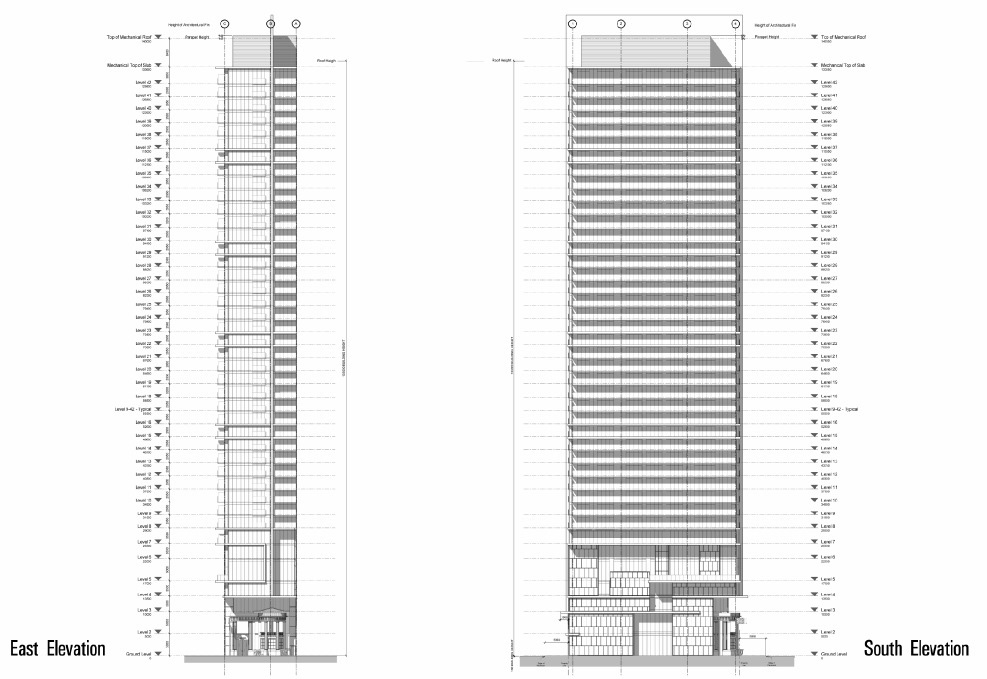Home Top Stories
'Car-free' condo: 42 storeys, no parking
September 16, 2009 04:09:00
Donovan Vincent
CITY HALL BUREAU
A controversial 42-storey condo building that will be built without permanent parking spots cleared a key hurdle yesterday.
The Toronto-East York community council overruled city staff skeptical about the dearth of parking to allow a plan that provides for only nine car-share rental spots, plus 315 spaces for bicycles.
The condominium would go up on the site of the century-old Royal Canadian Military Institute on University Ave. near Dundas St., which would be demolished, with elements of its facade preserved at the base and a thin tower above.
"If you look at the evidence of what sells downtown, the majority of units under 750 square feet in the downtown core sell without parking,'' said Stephen Deveaux, a vice-president with the developer, Tribute Communities. Parking spots typically add $20,000 or more to the cost of a downtown condo.
Deveaux called the project, which still needs approval from full city council, an opportunity to design and market an "environmentally progressive building." With so many jobs and handy transit nearby, the units will sell, Deveaux said.
A staff report on the condo plan in May gave it thumbs-down, citing, for one, the lack of parking. It stated the car-free plan "runs counter to expert study and experience."
The idea materialized when Tribute realized the narrow site would provide "challenges" to constructing a parking garage.
Councillor Adam Vaughan, who represents the ward, called the car-free building "an interesting experiment and statement about the future of downtown living.''
It also won praise yesterday from Franz Hartmann, co-executive director of the Toronto Environmental Alliance, who said such buildings are uncommon – if they exist at all. "In the past it was natural to allocate parking spots, but in 21st century Toronto, where we're battling climate change, we don't need that any more,'' he said.
The few parking spots in the plan will be devoted to car-share arrangements, whereby residents can rent a car as needed by the hour.
The plan involves tearing down the decaying Royal Canadian Military Institute building, a private club constructed in 1907 that is on the city's inventory of heritage properties, and replacing it with a 6*1/2-storey structure that maintains elements of the façade. Above would rise a 35*1/2-storey condo tower with about 315 units, mostly one-bedroom.
The $65 million project is the fruit of a partnership between Tribute and the 1,500-member club. Construction could begin as early as next year and be done by 2013.
The building will continue to provide space for the club, its library and its extensive archival collection of military artifacts – including the seat of Baron von Richthofen's Fokker Triplane, its most famous item.
Though the institute's board has approved the project, several members at large oppose it.
Member Brian Lawrie told the community council that in 2007 Vaughan had "enthusiastically endorsed" keeping the building intact, calling it a "rare remnant of University Avenue's early days as a quiet boulevard dominated by trees, not highrises." He noted that the councillor had done a "180-degree turn" the next year by endorsing the demolition and condo project.
Normally, building plans follow a formula for how much parking space should be allowed; current standards, if applied to the building, would provide approximately 140 parking spaces for residents.
"To assume a residential development of the project's scale might be totally car-free runs counter to expert study and experience," the staff report stated. "Although there are many households in the downtown (area) without cars, it would be highly unlikely to find 315 of them permanently concentrated in one building."
It also stated that, "exempting the project from the city's parking standards would create a negative precedent that undermines the integrity of the parking provisions of the zoning bylaw."
But the project got the green light after Vaughan suggested a series of amendments to bring the building into what he later described as "better conformity" with the area.
The only way to save its museum and artifacts is to redevelop the site, Vaughan told the meeting.
The project goes to city council later this month for final approval.


